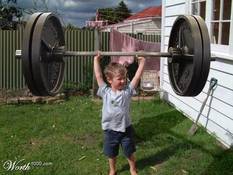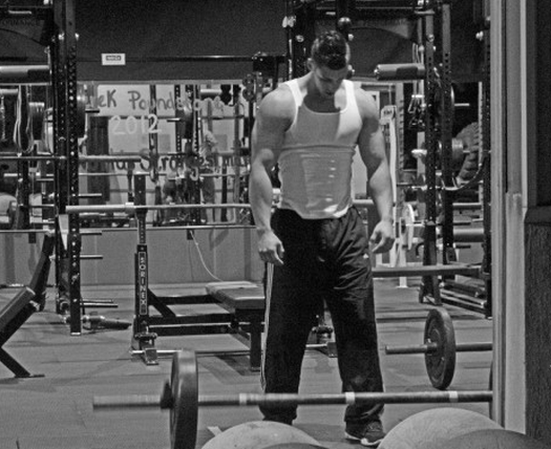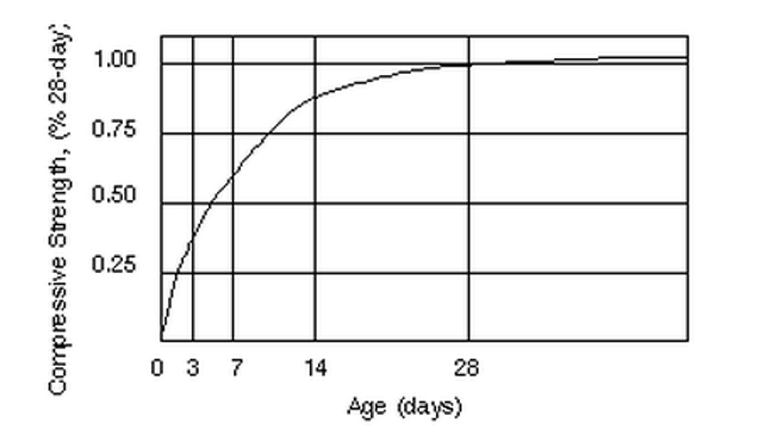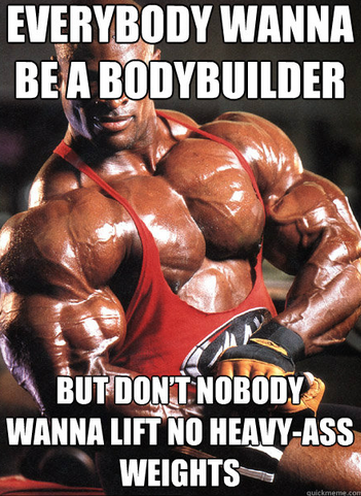Here’s a shot out of a cannon.
If you had to choose a single rep range to train for muscle growth for the rest of your life, what would it be?
1 to 3 reps?
4-8 reps?
15-30 reps?
The choices of rep ranges are essentially endless.
Think about it realistically for a minute.
In your own personal training experience, which rep ranges has helped you gain the most muscle mass.
I’m not talking increases in strength (there is some correlation between strength and muscle size, but it’s not a direct relationship), but size and shape of your muscles.
I ask my friends and clients this all the time, and it’s almost always the same response from everyone.
(I’ll tell you what most of them unequivocally answer at the end of this.)
In this article, I’m going to explain some of the research behind training for muscle size and fill you in on what I would pick based on evidence, results, and my personal experience.
If you had to choose a single rep range to train for muscle growth for the rest of your life, what would it be?
1 to 3 reps?
4-8 reps?
15-30 reps?
The choices of rep ranges are essentially endless.
Think about it realistically for a minute.
In your own personal training experience, which rep ranges has helped you gain the most muscle mass.
I’m not talking increases in strength (there is some correlation between strength and muscle size, but it’s not a direct relationship), but size and shape of your muscles.
I ask my friends and clients this all the time, and it’s almost always the same response from everyone.
(I’ll tell you what most of them unequivocally answer at the end of this.)
In this article, I’m going to explain some of the research behind training for muscle size and fill you in on what I would pick based on evidence, results, and my personal experience.
How Muscles Grow
Water, fresh soil, and sunlight of course.
No wait, that’s plants.
There really is no “secret” to how muscles grow.
In fact trainees and bodybuilders have been pretty good about knowing what makes muscles grow since the late ‘60’s.
In scientific terms, increased tension development is necessary for initiating compensatory growth.
What does this mean?
All this means is that high amounts of tension in the muscle are required to initiating the growth process for muscles.
There are also a few elements of muscular fatigue (that burning feeling) that are responsible for signaling a “growth response”, but that contributes to a much smaller extent.
And the most important part about the statement above is that there NEEDS TO BE AN INCREASE IN TENSION OVER TIME.
It just isn’t enough to elicit tension within the muscle, but the amount of tension must be increased as well for the muscle to grow.
This can be explained simply as YOU MUST ADD WEIGHT TO THE BAR OVER TIME.
In graphic form, it would look something like this
Water, fresh soil, and sunlight of course.
No wait, that’s plants.
There really is no “secret” to how muscles grow.
In fact trainees and bodybuilders have been pretty good about knowing what makes muscles grow since the late ‘60’s.
In scientific terms, increased tension development is necessary for initiating compensatory growth.
What does this mean?
All this means is that high amounts of tension in the muscle are required to initiating the growth process for muscles.
There are also a few elements of muscular fatigue (that burning feeling) that are responsible for signaling a “growth response”, but that contributes to a much smaller extent.
And the most important part about the statement above is that there NEEDS TO BE AN INCREASE IN TENSION OVER TIME.
It just isn’t enough to elicit tension within the muscle, but the amount of tension must be increased as well for the muscle to grow.
This can be explained simply as YOU MUST ADD WEIGHT TO THE BAR OVER TIME.
In graphic form, it would look something like this
Ronnie Coleman seems to have summed it up quite eloquently when he said,
“Errr’budy wants to be a bodybuilder, but nobody wants to lift no heavy-ass weights!”
“Errr’budy wants to be a bodybuilder, but nobody wants to lift no heavy-ass weights!”
As far as natural (drug free) lifters are concerned, evidence has proven that the biggest and most muscular bodybuilders are often the strongest.
This is due to the nature of the training that natural physique athletes implement. They develop more muscle mass because they provide progressive tension over time through adding weight to their lifts over time.
The simple fact is if you’re not increasing the weight on your lifts (over time, don’t try to add 5 pounds every workout) you just will not grow.
Go lift the same weight every workout for the next 6 months and tell me I’m wrong.
You can even try to focus on the “pump” and “feel” of the muscle all you want, but once again, if the weight isn’t increasing then you just will not grow.
Period.
This is due to the nature of the training that natural physique athletes implement. They develop more muscle mass because they provide progressive tension over time through adding weight to their lifts over time.
The simple fact is if you’re not increasing the weight on your lifts (over time, don’t try to add 5 pounds every workout) you just will not grow.
Go lift the same weight every workout for the next 6 months and tell me I’m wrong.
You can even try to focus on the “pump” and “feel” of the muscle all you want, but once again, if the weight isn’t increasing then you just will not grow.
Period.
Nueral Efficiency When Lifting Weights
I won’t get too deep into this subject, but I do want to make mention of it because it’s somewhat important and relevant to making increases in muscle mass.
Muscle fiber recruitment is an essential part to increasing muscle size. And it’s exactly what it’s name implies: how many muscle fibers are being recruited during a lift.
The better you get at a certain movement and the more frequently you train it, the more efficient your muscle fiber recruitment will be.
If you’re just starting off and beginning a new move (think dumbbell chest press) you won’t be very strong and will have a hard time moving the weight through space at first.
2 weeks later if you’ve been continually training the lift, you’ll notice you’re a lot more fluid with the movement of the dumbells and the power output of the movement (moving weight through space in least amount of time) improves dramatically.
It’s not because you’ve gotten stronger (not totally anyway) but because your neural efficiency has improved and muscle fiber recruitment have improved.
For bodybuilding purposes (increasing muscle size and improving body composition) we ideally want to use fiber recruitment to increase output force production to around 80-85% of MAX force output.
Output beyond the 85% threshold uses a different mechanism all together.
Remember this value of 85%, it’s important.
I won’t get too deep into this subject, but I do want to make mention of it because it’s somewhat important and relevant to making increases in muscle mass.
Muscle fiber recruitment is an essential part to increasing muscle size. And it’s exactly what it’s name implies: how many muscle fibers are being recruited during a lift.
The better you get at a certain movement and the more frequently you train it, the more efficient your muscle fiber recruitment will be.
If you’re just starting off and beginning a new move (think dumbbell chest press) you won’t be very strong and will have a hard time moving the weight through space at first.
2 weeks later if you’ve been continually training the lift, you’ll notice you’re a lot more fluid with the movement of the dumbells and the power output of the movement (moving weight through space in least amount of time) improves dramatically.
It’s not because you’ve gotten stronger (not totally anyway) but because your neural efficiency has improved and muscle fiber recruitment have improved.
For bodybuilding purposes (increasing muscle size and improving body composition) we ideally want to use fiber recruitment to increase output force production to around 80-85% of MAX force output.
Output beyond the 85% threshold uses a different mechanism all together.
Remember this value of 85%, it’s important.
HERE’S THE ANSWER TO THE QUESTION
The reason you all are reading this, right?
From everything I stated above about tension in the muscle, the research has proven that 80-85% of the lifter’s 1 rep maximum is generally 5-8 repetitions (for upper body, lower body movements tend to result in 12-15 reps)
So let’s put it all together here and now.
Pretend you put 95% of your 1 rep max on the bar. Typically most folks could hit about 2 reps with this weight.
By only hitting 2 reps with 95%, you would not increase the fiber recruitment.
All you would be doing is drastically lowering the amount of volume you are doing for the workout by lifting at such a high intensity.
On the other end, let’s say you do 15 reps which is about a 70% of a 1 rep maximum. If you take this lift to failure at this weight, you can recruit all the muscle fibers necessary for growth.
BUT most of the fibers won’t be recruit until the very end of the set towards the higher-end reps.
This means the high threshold fibers won’t be exposed to the necessary mechanical tension required for growth for very long.
Now here’s the good stuff.
Like most things in the life, the best things are always found in the middle of the spectrum between the 2 polar extremes.
So let’s say you work in the 5-8 rep range with 80-85% of your 1 rep max.
In this rep range you will get full muscle fiber recruitment immediately from the first rep.
You will also maximize the fatigue/metabolic work and volume for the muscle necessary to stimulate growth by working in this 5-8 rep range.
This rep range is something of the ‘sweet spot’, or ‘perfect balance’ to provide optimal mechanical tension in the muscle due to fiber recruitment and a proper amount of fatigue/metabolic work in the muscle that acts as a signal to grow.
And wouldn’t you know it? The 5-8 rep range is what most people instinctively answer when I ask them what rep range they would pick if they had to only use one for the rest of their lives.
This does not discredit the other rep ranges by any means.
The 1-3 rep range and 10-20 rep ranges have their place and uses and can be used very effectively within strength and body composition programs.
There are plenty of valid and valuable reasons to use these rep ranges.
But for all intents and purposes of this article, the main point made was reps used for optimal muscle growth.
So if you’re looking to build your own program, or you’re a rookie lifter looking to build an impressive physique, you really can’t go wrong lifting with 80-85% of your 1 rep max for 5-8 reps to provide some exceptional muscle size gains.
Related Articles
The reason you all are reading this, right?
From everything I stated above about tension in the muscle, the research has proven that 80-85% of the lifter’s 1 rep maximum is generally 5-8 repetitions (for upper body, lower body movements tend to result in 12-15 reps)
So let’s put it all together here and now.
Pretend you put 95% of your 1 rep max on the bar. Typically most folks could hit about 2 reps with this weight.
By only hitting 2 reps with 95%, you would not increase the fiber recruitment.
All you would be doing is drastically lowering the amount of volume you are doing for the workout by lifting at such a high intensity.
On the other end, let’s say you do 15 reps which is about a 70% of a 1 rep maximum. If you take this lift to failure at this weight, you can recruit all the muscle fibers necessary for growth.
BUT most of the fibers won’t be recruit until the very end of the set towards the higher-end reps.
This means the high threshold fibers won’t be exposed to the necessary mechanical tension required for growth for very long.
Now here’s the good stuff.
Like most things in the life, the best things are always found in the middle of the spectrum between the 2 polar extremes.
So let’s say you work in the 5-8 rep range with 80-85% of your 1 rep max.
In this rep range you will get full muscle fiber recruitment immediately from the first rep.
You will also maximize the fatigue/metabolic work and volume for the muscle necessary to stimulate growth by working in this 5-8 rep range.
This rep range is something of the ‘sweet spot’, or ‘perfect balance’ to provide optimal mechanical tension in the muscle due to fiber recruitment and a proper amount of fatigue/metabolic work in the muscle that acts as a signal to grow.
And wouldn’t you know it? The 5-8 rep range is what most people instinctively answer when I ask them what rep range they would pick if they had to only use one for the rest of their lives.
This does not discredit the other rep ranges by any means.
The 1-3 rep range and 10-20 rep ranges have their place and uses and can be used very effectively within strength and body composition programs.
There are plenty of valid and valuable reasons to use these rep ranges.
But for all intents and purposes of this article, the main point made was reps used for optimal muscle growth.
So if you’re looking to build your own program, or you’re a rookie lifter looking to build an impressive physique, you really can’t go wrong lifting with 80-85% of your 1 rep max for 5-8 reps to provide some exceptional muscle size gains.
Related Articles

Optimize Your Training With These Muscle Building Methods
Today’s society would lead you to believe that the more complicated something is, the more effective it must be.
“The illusion of complexity” is the psychological terminology for it.
Today’s society would lead you to believe that the more complicated something is, the more effective it must be.
“The illusion of complexity” is the psychological terminology for it.

Let's Keep IT Simple: Training For Fatloss
So let’s talk about training for fat loss, and what you should consider if you’re trying to get the most out of your efforts...KEEP READING
So let’s talk about training for fat loss, and what you should consider if you’re trying to get the most out of your efforts...KEEP READING

AVOID THESE 5 COMMON TRAINING MISTAKES THAT ARE LIMITING YOUR MUSCLE GAINS
Weight training and improving your physique is a balance of discipline and strategy, not excess. Save yourself a lot of time and frustration by avoiding these common mistakes in and out of the gym...KEEP READING
Weight training and improving your physique is a balance of discipline and strategy, not excess. Save yourself a lot of time and frustration by avoiding these common mistakes in and out of the gym...KEEP READING



